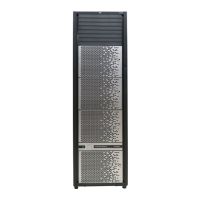Table 3 Virtualization features and functions (continued)
DescriptionFeature
virtual devices created on the HP XP7 disk array. Functions such as Continuous
Access Synchronous and Cache Residency can be performed on external data
through the virtual devices.
Table 4 Performance management features and functions
DescriptionFeature
Cache Residency locks and unlocks data into the cache to optimize access to the most
frequently used data. It makes data from specific logical units resident in a cache, making
Cache Residency
all data accesses become cache hits. When the function is applied to a logic unit,
frequently accessed, throughput increases because all reads become cache hits.
Performs detailed monitoring of the disk array and volume activity. This is a short term
function and does not provide historical data.
Performance Monitor
Enables the mainframe host to issue multiple I/O requests in parallel to the same
LDEV/UCB/device address in the HP XP7. Parallel Access Volumes provides compatibility
Parallel Access Volumes
with the IBM Workload Manager (WLM) host software function and supports both static
and dynamic PAV functionality.
Table 5 Provisioning features and functions for Open systems
DescriptionFeature
Provides automated movement of sub LUN data for a multi tiered Thin Provisioning pool.
The most accessed pages within the pool is dynamically relocated onto a faster tier in
Smart Tiers
the pool. This improves performance of the most frequently accessed pages while giving
the remaining data sufficient response times on a lower cost storage.
The LUN Manager feature configures the fibre channel ports and devices (logical units)
for operational environments.
LUN Manager
The LUN Expansion feature expands the size of a logical unit (volume) to which an open
system host computer accesses by combining multiple logical units (volumes) internally.
LUN Expansion
The Thin Provisioning feature virtualizes some or all of the system's physical storage. This
simplifies administration and addition of storage, eliminates application service
Thin Provisioning
interruptions, and reduces costs. It also improves the capacity and efficiency of disk
drives by assigning physical capacity on demand at the time of the write command
receipt without assigning the physical capacity to logical units.
Converts single volumes (logical volume images or logical units) into multiple smaller
volumes to improve data access performance.
Virtual LVI
Protects data in logical units / volumes / LDEVs from I/O operations illegally performed
by host systems. Users can assign an access attribute to each volume to restrict read
and/or write operations, preventing unauthorized access to data.
Data Retention
Table 6 Provisioning features and functions for Mainframe
DescriptionFeature
Converts single volumes (logical volume images or logical units) into multiple smaller
volumes to improve data access performance.
Virtual LVI
Restricts host access to data on the HP XP7. Open system users can restrict host access
to LUNs based on the host's world wide name (WWN). Mainframe users can restrict
host access to volumes based on node IDs and logical partition (LPAR) numbers.
Volume Security for
Mainframe
Protects data from I/O operations performed by hosts. Users can assign an access
attribute to each logical volume to restrict read and/or write operations, preventing
unauthorized access to data.
Volume Retention
14 Introduction

